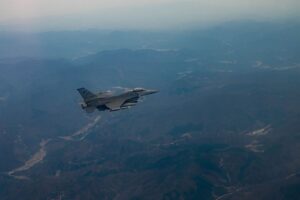
NATIONAL HARBOR, Md.--L3Harris Technologies [LHX] said that its site in Clifton, N.J., several weeks ago began the build of 166 AN/ALQ-254(V)1 Viper Shield all-digital electronic warfare (EW) suites for F-16 fighters in six countries under a total Viper Shield backlog of $1 billion. During the Air and Space Forces Association's annual Air, Space and Cyber conference here, Jennifer Lewis, the head of L3Harris' airborne combat systems business, told reporters that L3Harris is in talks with other countries to address what…













